The author got a confirmed trail camera image of a cougar in Wisconsin this past summer. But does that mean the big cats are moving east?
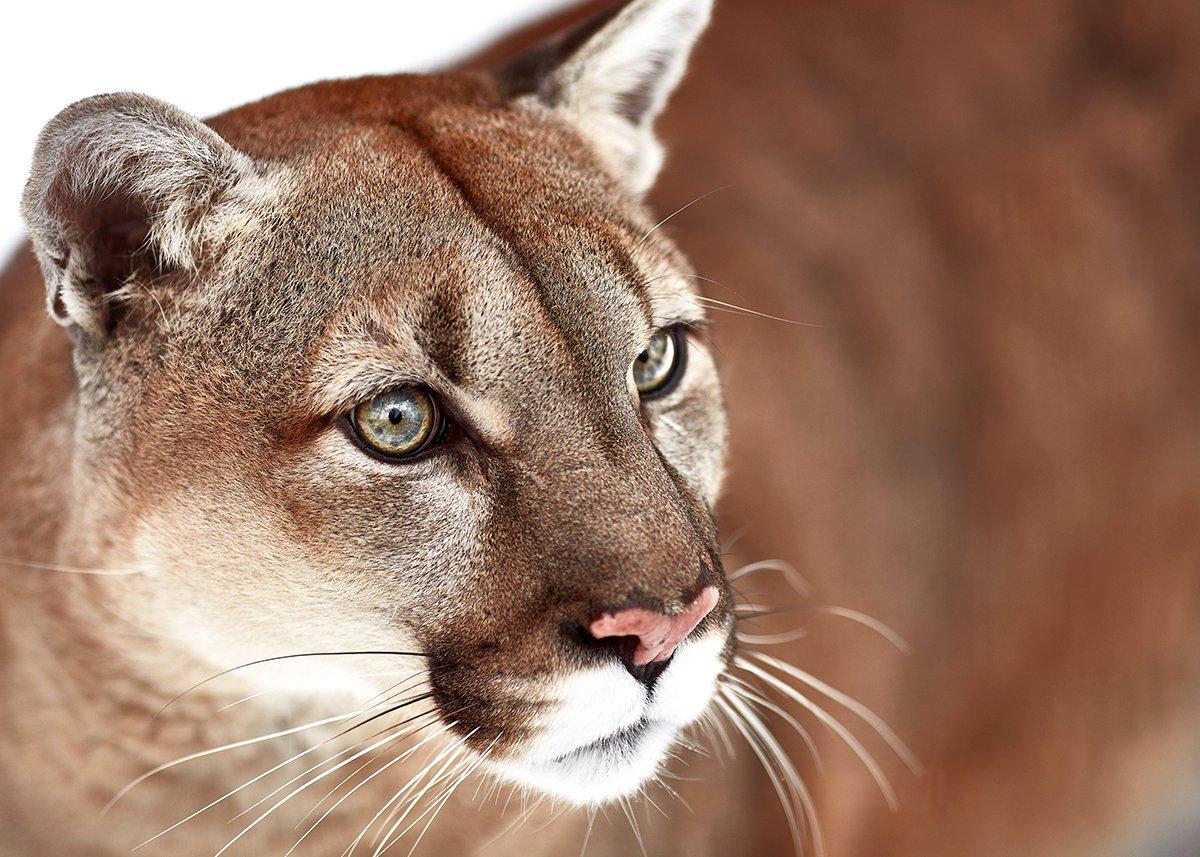
Few hunters have had cougars on their land in the Midwest, Southeast, or Northeast. But the author has. Image by Evgeniyqw
It was the morning of July 29, and I had just received a batch of photos from my CuddeLink trail cameras. I was hoping for a few nice velvet buck pictures, but I couldn’t believe what I saw instead while sifting through photos. A no-doubt-about-it mountain lion photo; clear as day, standing 20 yards from a productive deer stand.
I immediately sent the image to my parents and gave them a call. These woods in southwestern Wisconsin are where my family has lived since 1985. As a child, it’s where I tagged along with Dad for squirrel hunts, built forts, and matured as a deer hunter. Although it isn’t completely unheard of, you never expect to see a big cat roaming around in this area of the Midwest. I immediately reached out to a member of the Wisconsin DNR to inform the agency.
Within minutes, I was speaking to Wisconsin wildlife biologist Savanna Hartman, who said, “It’s been around a decade since the last verified report of a cougar in the southwestern portion of Wisconsin.” She told me that most reports in recent years had been in the northern or eastern part of the state.
As this was transpiring, I couldn’t help but think about my upcoming fall deer hunting and wonder: How many mountain lions are running around the whitetail woods? When a photo of a mountain lion hits social media, deer hunters often come out in droves with comments about not wanting cougars around during a pre-dawn walk to the deer stand.
So, how did that cat on my camera get here — and are there likely to be more of them around?
(Don’t Miss: 70-YEAR-OLD UTAH MAN USES ROCK TO DEFEND AGAINST COUGAR ATTACK)
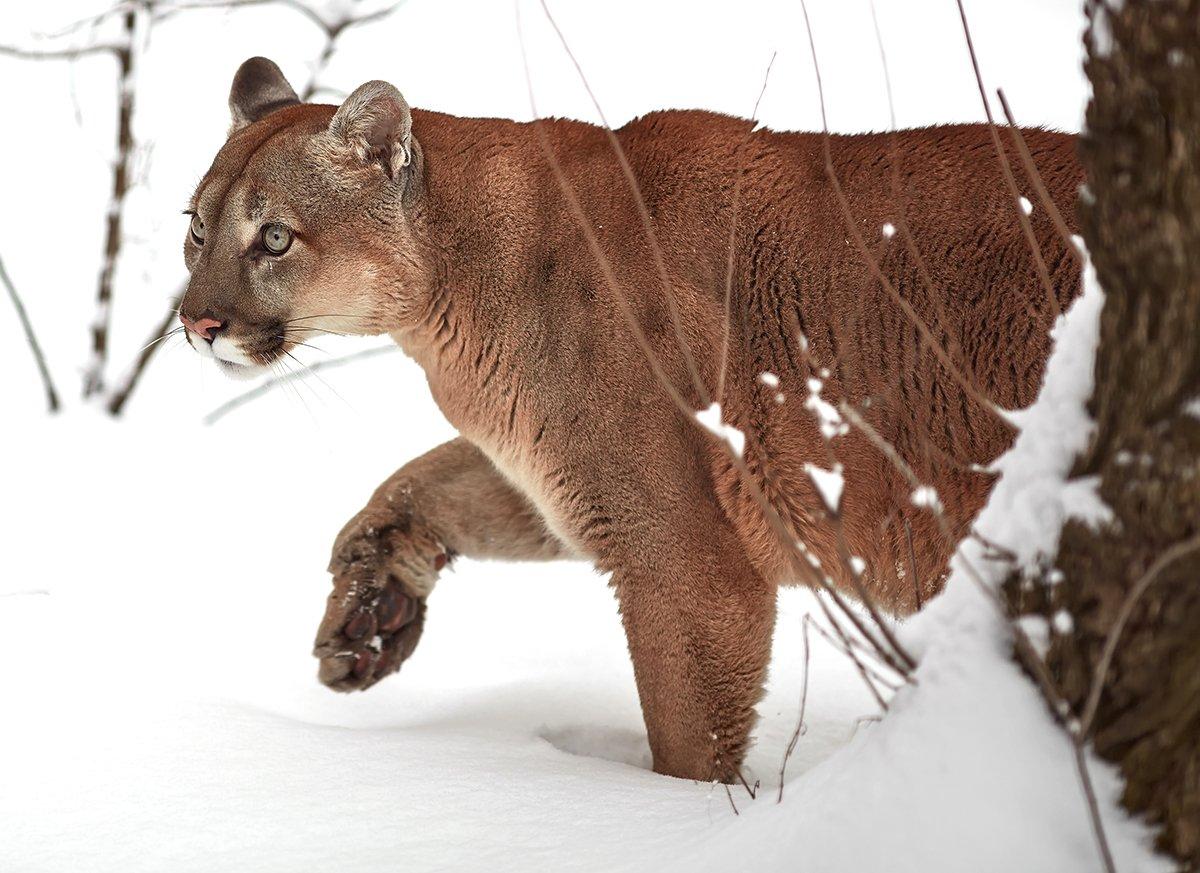
Most cougars spotted in the eastern half of the country are wandering males that eventually head back westward. Image by Evgeniyqw
Are Cougars Taking up Residence in Your Woods?
Western states such as California, Idaho, Montana, Colorado, and the Dakotas support sustainable, breeding populations of mountain lions. If you hunt or recreate in Western states, you’re likely in mountain lion country. But if you don’t live out West, it is unlikely there are mountain lions consistently residing in your woods.
Mountain lions prefer rugged terrain with ample cover, and they settle in areas with healthy prey populations. The area of southwestern Wisconsin, where I hunt and captured the trail camera photo, checks all the boxes, so it isn’t unheard of to see a passing cougar. Many areas east of the Mississippi are also rugged, have solid cover, and usually have plenty of food for a cougar to thrive. What would that feed be? Whitetails. In Western states, a cougar’s diet is largely comprised of mule deer, followed by whitetails and other big game.
Still, when asked if mountain lions could move into Midwest states such as Wisconsin, Randy Johnson, a large carnivore specialist with the Wisconsin Department of Natural Resources told me, “I expect it to occur at some point in the future, probably decades out, but predicting when they could take up residence is nearly impossible. Keep in mind, mountain lions are a native species to Wisconsin and were present in the state until the early 1900s.”
But many hunters and residents in many areas of prime whitetail country believe there are more mountain lions out there than we actually see. Avid hunter and southeastern Wisconsin resident Kelly Nelson told me, “I absolutely think there are more cougars than the DNR will admit, but I don’t think there is some grand conspiracy, or any black helicopters involved.”
Although Nelson isn’t a believer in some government collusion scheme, there are many hunters who believe there are cover-ups by wildlife agencies to mask the existence of cougars. I don’t see or hear of any concrete evidence of this occurring.
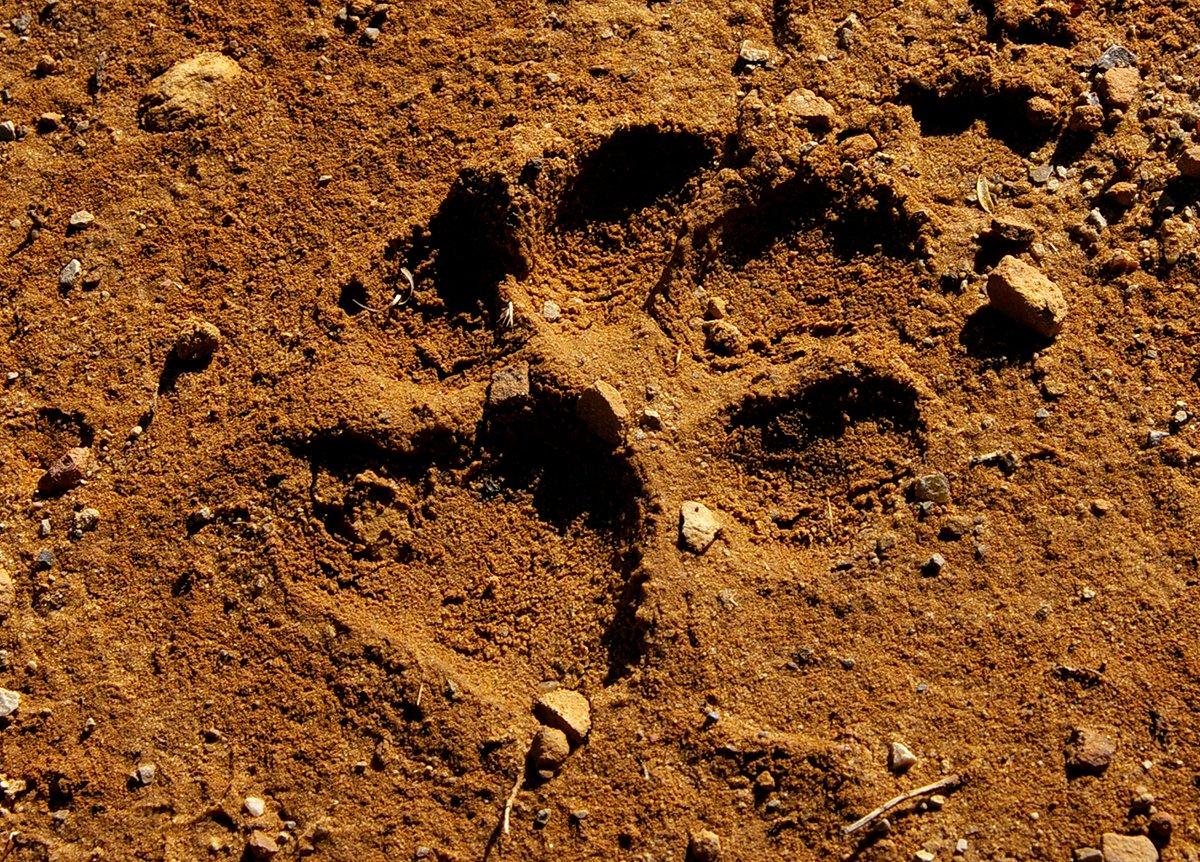
Mature male cougars might travel hundreds if not thousands of miles. Image by Ashley Keller
Distance is No Obstacle
So, why the occasional confirmed sightings? Much of it has to do with the behavior of young male lions. For them, covering miles is no problem. In June 2011, a 141-pound male cougar was struck and killed by a vehicle in Milford, Connecticut. The story made national headlines and brought attention to the traveling ability of mountain lions. It was a shock to locals and even wildlife professionals on the East Coast, but the chances of mountain lions living in far eastern United States areas for good are slim to none.
Wildlife biologist Jason Hawley of Connecticut said, “There are a ton of obstacles for natural recolonization of cougars to occur in the Northeast. The most significant obstacle is that female mountain lions do not disperse long distances. Without human assistance, it would take many decades for mountain lions to permanently move into the area.”
According to an article in the Journal of Mammology, the male cougar killed in Connecticut traveled a straight-line distance of about 1,500 miles from the Black Hills of South Dakota. Genetic samples suggest it dispersed from the area.
In fact, wildlife officials detected the same male cougar at five locations as it traveled across the country. Hair and DNA samples were confirmed in Minnesota, three times in Wisconsin, and once in New York before the cat reached Connecticut. Male cougars travel to locate food and mating opportunities.
The Black Hills of South Dakota support one of the easternmost concentrated populations of cougars. In Wisconsin, meanwhile, wildlife officials have yet to confirm a female cougar or kitten in the state. Randy Johnson said, “We have verified numerous cougar sightings in the state going back some two decades. We have collected genetic samples [like scat or hair] on several occasions, and each successful genetic sample has indicated the same result — the animal was a male and most likely originated and traveled from the South Dakota population.”
Cougars are transient animals that can easily cover tens of miles per day. When they’re seen in unusual areas, it leads to many to believe there is a stable population of them, when in all likelihood, one transient male is being seen multiple times.
But not always. Although it is extremely rare for a female mountain lion to disperse, Tennessee documented the presence of one as recently as 2015. Tennessee Region 1 Wildlife Manager Daniel Stanfield said, “A hair sample was submitted by a hunter in late September 2015 from Carroll County, and DNA analysis confirmed it was a female with genetics similar to cougars in South Dakota.” The last confirmed cougar sighting in Tennessee was on a trail camera photo in 2016 submitted by a landowner.
Stanfield said, “Like many wildlife species, cougars are adjusting their habitat and natural territories to work around urbanization and development. While cougar sightings are extremely rare, we work to follow up on each report to confirm or deny the sighting with biological evidence.”
(Don’t Miss: VIDEO CAPTURES SCHOOL PRINCIPAL RUNNING WHEN BEAR POPS OUT OF DUMPSTER)
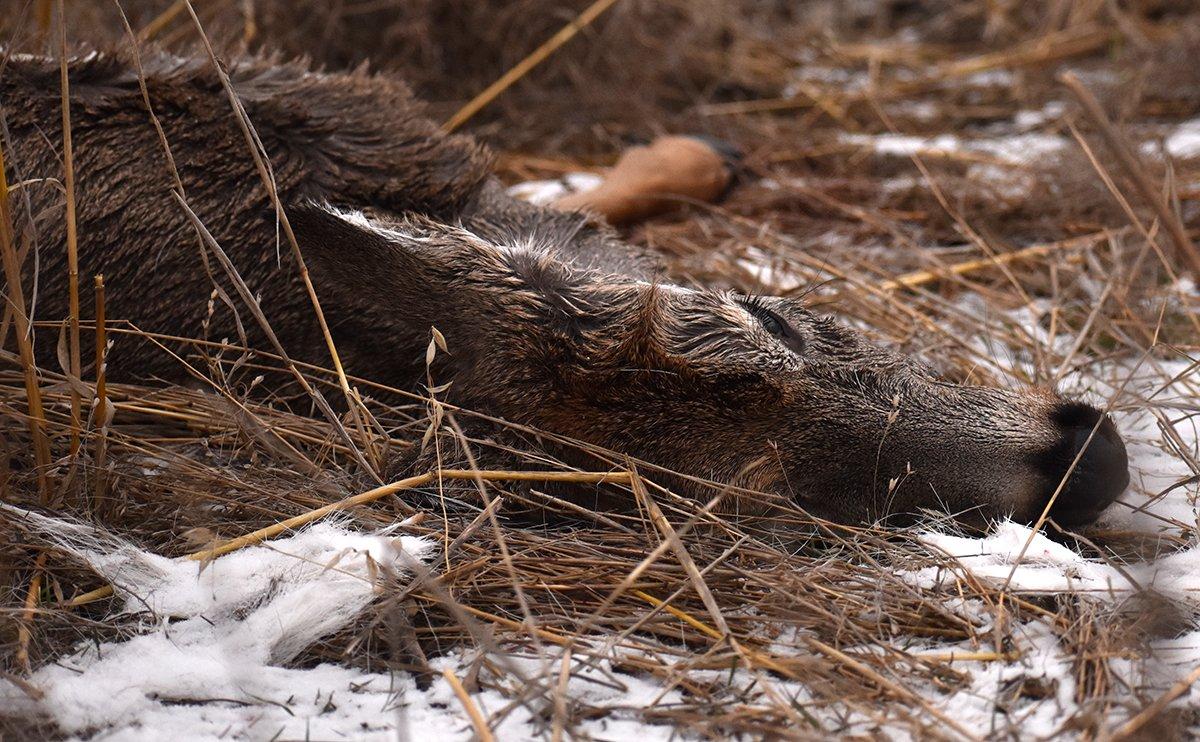
Food isn’t the reason that most eastern cougars return to the West. It’s the lack of female mountain lions and no opportunities to breed. Image by Glacier Photography
If They Show, Why Don’t They Stay?
Although male mountain lions heading east isn’t unheard of, they rarely stay, even in decent habitat. As some biologists indicated, opportunities for breeding are almost nonexistent and likely have the strongest influence on their desire to return west. If male cougars don’t encounter a mate, they will keep moving. That non-dispersal of female lions is likely why states east of the Mississippi won’t hold a steady mountain lion population any time soon.
In fact, in 2011, the U.S. Fish and Wildlife Service recommended the eastern mountain lion be listed as extinct. Seven years later, they officially declared them as such. There is some controversy surrounding the difference between the eastern mountain lion and western mountain lion, but it’s now widely believed there is no major difference between the eastern and western subspecies.
In rugged states such as West Virginia, deer hunters can breathe easy, as cougars have essentially never been confirmed in the state in modern times. In 1976, one mountain lion was killed and another captured. Both were confirmed to have been previously held in captivity.
West Virginia Assistant Chief of Big Game Management Steven Rauch told me, “The last recorded killing of a wild cougar in West Virginia was in 1887 when Col. Cecil Clay and Frances McCoy shot one on Tea Creek in Pocahontas County, West Virginia.” European settlers viewed mountain lions as a threat and took every opportunity to kill them to protect livestock and themselves. Since the late 1800s and early 1900s, there hasn’t been a stable population in these areas. In fact, Rauch said there is no evidence of a female mountain lion in his area since the later part of the 1800s.
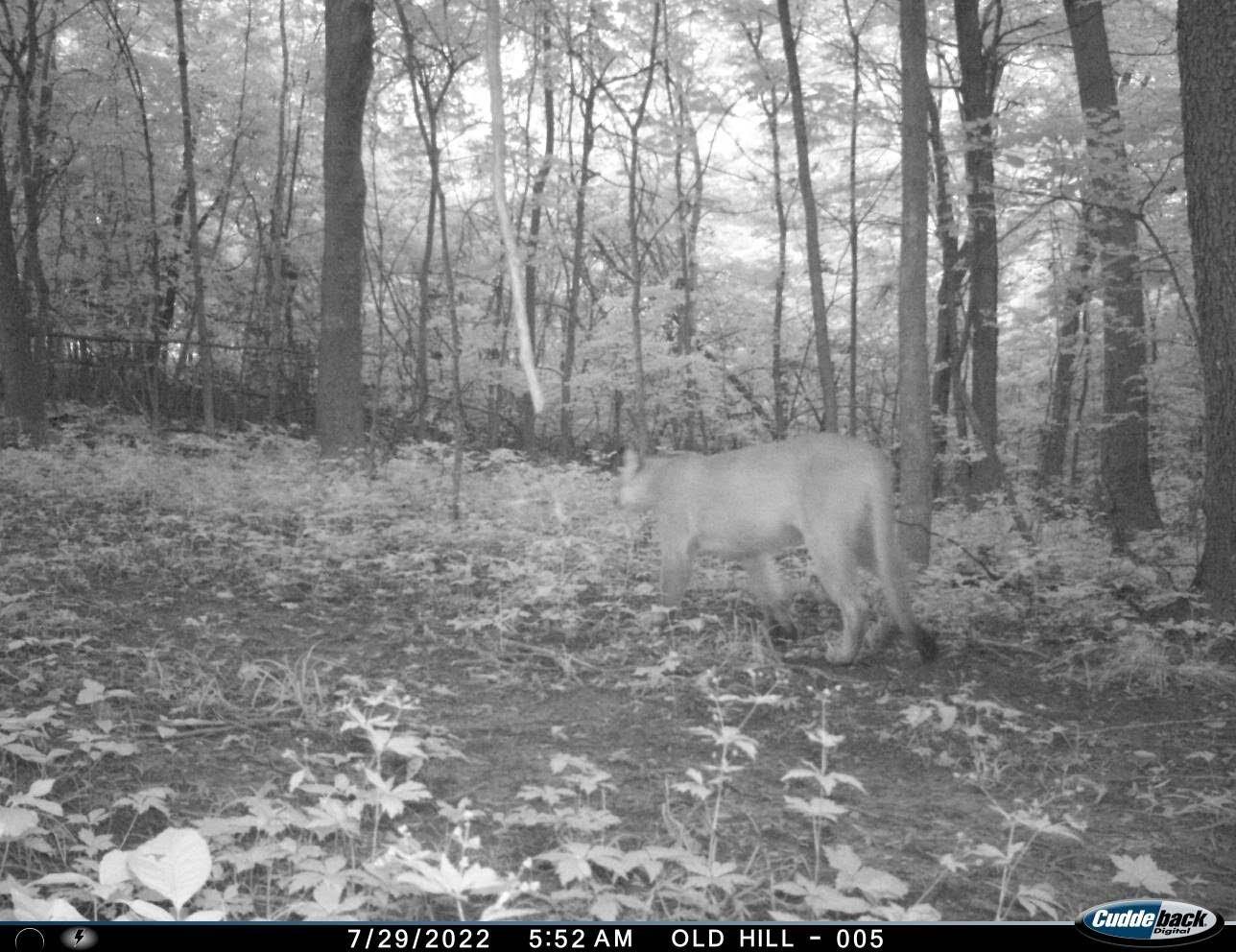
The author captured this mountain lion on trail camera during the 2022 deer season. Of course, he was stunned. Image by Paul Annear
The Rumor Mill
Mountain lions are secretive animals that predominantly travel at night. In these modern days of trail cameras, social media, and home security systems, people get many photos and videos of animals that look like mountain lions. Although an Iowa bowhunter captured a spectacular video of a mountain lion hopping a fence and walking through his food plot in broad daylight during Fall 2022, this is unlikely to happen to you.
As you might imagine, wildlife biologists spend a significant amount of time and resources attempting to confirm or refute potential cougar sightings. Most are cases of simple misidentification. People frequently mistake bobcats for mountain lions, for example, because of their similar appearance. Bobcats are large cats that breed and live in many states throughout the Midwest and East, and they can be easily confused for mountain lions at a glimpse or in a blurry trail camera image.
If a potential cougar photo is captured on trail camera, officials will likely come out to view the physical trail camera, view the photo on the SD card, and take measurements of nearby vegetation or objects to confirm the body size of the cougar.
Every now and then, as happened to me, those efforts prove a report of a cougar sighting in the Midwest or East to be true — but it’s still highly unlikely that your deer hunt is going to be interrupted by a mountain lion.
(Don’t Miss: ARE BOBCATS IMPACTING WILD TURKEY POPULATIONS?)










